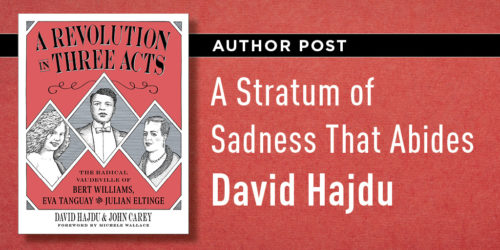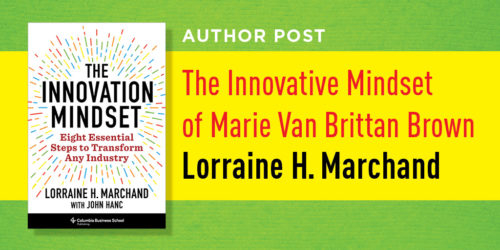Q&A: Scott MacDonald on William Greaves, a Pioneer of African American Filmmaking

William Greaves is one of the most significant and compelling American filmmakers of the past century. Best known for his experimental film about its own making, Symbiopsychotaxiplasm: Take One, Greaves was an influential independent documentary filmmaker who produced, directed, shot, and edited more than seventy films on a variety of social issues and on key African American figures ranging from Muhammad Ali to Ralph Bunche to Ida B. Wells. In this Q&A, Scott MacDonald, coeditor of William Greaves: Filmmaking as Mission lays bare Greaves’s journey from actor to filmmaker to preserver of the African-American experience.
Q: I see that the new William Greaves book has a dossier on the Symbiopsychotaxiplasm films. Strange title!
Scott MacDonald: It’s the title of two experimental features. The first, Symbiopsychotaxiplasm: Take One, is an exploration of the process of shooting a movie. It’s among the most brilliant movies about movie-making of all time and a remarkable time capsule of the era when it was shot (1967). “Symbiotaxiplasm” is social scientist Arthur Bentley’s term for any group of people and whatever impinges on them. Greaves wanted to explore the psychology of a cast and crew during the shooting of a film in a public place, and inserted “psycho” into Bentley’s term. The title was, at least implicitly, a warning that the film was something new and unusual.
As a result of a snafu at Cannes, Symbiopsychotaxiplasm: Take One was hidden in a box in Greaves’s closet for twenty years until Dara Meyers-Kingsley discovered it and made it the opening film in the Brooklyn Museum’s 1991 retrospective of Greaves’s work. Though Greaves was quickly becoming the most prolific and accomplished African American documentary filmmaker of all time, Symbiopsychotaxiplasm: Take One, did not have its first theatrical engagement until Stephen Soderbergh made sure it was shown at New York’s IFC Center in October and November 2005.
Symbiopsychotaxiplasm: Take One’s reemergence has had a range of impacts. Soderbergh and Steve Buscemi were so impressed with the film that they became producers of a follow-up project, which brought together actors and crew from the original production to make Symbiopsychotaxiplasm: Take 2 ½ in 2005.
Symbiopsychotaxiplasm: Take One’s sudden acclaim also brought overdue attention to Greaves’s many other remarkable films—and in the long run to Jacqueline Najuma Stewart and I collaborating on our book, William Greaves: Filmmaking as Mission.
Q: If Greaves is so important, why haven’t I heard of him? Were his other films also experimental?
SM: In a way it’s a surprise any of us have heard about Greaves, at least about his work as a documentary filmmaker! Early on, he was an accomplished dancer, performing with Pearl Primus at Carnegie Hall; a successful stage actor, first with the American Negro Theatre in Harlem and later on Broadway; and an early member of the Actors Studio. He was also a successful songwriter. If you google Eartha Kitt’s version of “African Lullaby,” you can hear an example. And he was a movie actor in some of the last “race films” —that is, movies made for African American audiences during a segregated era. He appeared with Joe Louis in The Fight Never Ends (1948) and with Stepin Fetchit in Miracle in Harlem (1948). He also had a key cameo in the Hollywood “problem picture” Lost Boundaries (1949) and performed on the television program Lamp Unto My Feet.
Q: But I asked about his other films!
SM: I’m just getting to that. Greaves’s experience with commercial filmmaking as an actor made clear that there were few roles for African American actors that weren’t embarrassing, and he decided to see if he could get training to make films, to be behind the camera. Alas, no chance in the United States, so he went to Canada and found work at the National Film Board (NFB), where he worked on dozens of films and became part of the first cinema-verité unit in North America. Emergency Ward (1959), which Greaves wrote, directed, and filmed and edited, remains an early cinema-verité classic. You can see it on the NFB site.
In 1963 Greaves and his wife Louise moved to New York in order to use filmmaking to support the Civil Rights Movement. They began producing films for the United Nations and for the United States Information Agency (USIA), and soon established William Greaves Productions.
Q: Please, more about specific films—you say Greaves was prolific!
SM: Greaves was deeply committed to education—educating African Americans about their history and educating everyone about African and African American contributions to modern culture. His earliest film for the USIA was The First World Festival of Negro Arts (1966). The film depicted a poetic celebration of African/African American painting, sculpture, music, writing, and dancing held in in Dakar, Senegal. It would become the USIA’s most popular film in Africa. He made the first film —films, actually —about the first Muhammad Ali vs. Joe Frazier heavyweight championship bout on March 8, 1971, using then-new methods to record the fight. He and his son David provided, in Nationtime—Gary (1972), the only substantial record of the first National Black Political Convention, held in Gary, Indiana in 1972; the film was recently restored by the Museum of Modern Art. For two years, Greaves was the Executive Director of National Educational Television’s Black Journal, the first nationally televised news show dedicated to African Americans and Africa; he oversaw the production of a wide variety of news stories and features and mentored a generation of young African American media makers.
Greaves made a series of films about crucial contributors to American and world culture. In 1985 he made two films about Frederick Douglass for the Frederick Douglass National Historic Site in Washington, DC—one for adults, the other for children. In 1989 he made Ida B. Wells: A Passion for Justice, bringing long overdue attention to the courageous journalist. Among his later projects was an elaborate focus on Ralph Bunche: writer, diplomat for the UN, and the first African American winner of the Nobel Peace Prize. The project included a feature film, Ralph Bunche: An American Odyssey (2001), plus fourteen short video modules, a teacher’s guide, and a website.
Greaves even tried his hand at working in Hollywood, at one point hoping to produce a film based on the story “The Sweet Flypaper of Life,” a collaboration between writer Langston Hughes and photographer Roy DeCarava. Greaves wrote a screenplay, which he worked on at Sundance with Robert Redford, Paul Newman, Karl Malden, and James Brooks, but was unable to raise the necessary funding. He also executive-produced Bustin’ Loose (1981, directed by Oz Scott) with Richard Pryor.
Q: Was Greaves a writer?
SM: Yes, when it was necessary for his films and sometimes when he felt the need to express concerns or clarify events. William Greaves: Filmmaking as Mission includes essays Greaves wrote for the New York Times, Television Quarterly, The Crisis—and we’ve published all the written plans we’ve been able to find for the two Symbiopsychotaxiplasm films. Greaves lectured often and was interviewed many times; the book includes an extensive “meta-interview” constructed from written and televised interviews with Greaves over the decades, a kind of media autobiography that allows Greaves to tell his story and reveal his thinking, decade by decade and project by project.
Q: Is William Greaves: Filmmaking as Mission primarily a collection of scholarly essays?
SM: We worked to provide a wide range of scholarly essays, yes, but the book also includes reviews and interviews with Louise Greaves, with David Greaves, and with Michelle Duster (the great-grand-daughter of Ida B. Wells, who worked with Greaves on several films). There’s even a Greaves poem—and there are plenty of photographs, including Greaves with Toni Morrison, with Steve Buscemi, with Mother Teresa, and with Satyajit Ray. We hope our book will be a foundation for new efforts to screen the Greaves films that are available, and to get films not currently available (for example, the 1975 director’s cut of the Ali/Frazier filming, titled The Fight) into circulation.
And we want the book to be fun to explore—for those interested in knowing more about a crucial contributor to American culture as well as for scholars, teachers, and students who might want to explore the many facets of Greaves’s remarkable career.
Related Posts
-

-

-

-

-
 African American / Black Studies / American History / American Sociological Association / Author-Editor Post/Op-Ed / Black History Month / History / Human Rights / International Studies Association / Sociology
African American / Black Studies / American History / American Sociological Association / Author-Editor Post/Op-Ed / Black History Month / History / Human Rights / International Studies Association / SociologyReconceptualizing Justice for the Victims of the 1921 Tulsa Race Massacre
Nicole Iturriaga
-

-

-

